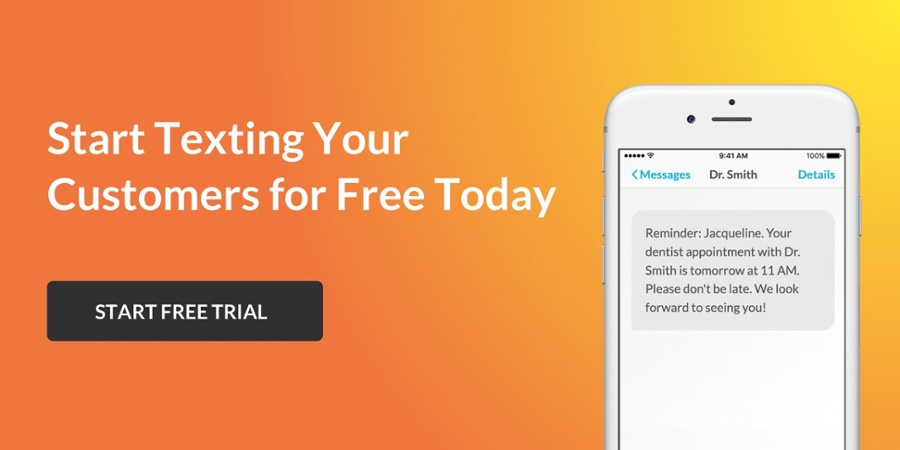Recruiting has always been about making connections—connecting competent people with the right jobs and good companies with strong talent. Until recently, most recruiting was done via email or over the phone. However, modern recruiters are leveraging a new tool in their quest to connect: text messages.
Text recruiting uses SMS as a replacement for (or a complement to) email recruiting, phone calls and HR software solutions. And it comes with all kinds of benefits.
If you’ve been wondering how to use texting for recruiting, you’ve come to the right place.
Why Text Recruiting?
More and more recruiters are turning to text recruiting for these four reasons:
It’s Immediate
With texting, you won’t have to worry about whether or not the recipient will see your message—95% of texts are opened within 3 minutes. In a two-way conversation, responses come soon after.
Additionally, text messages have a 98% open rate, compared to email’s 38.49% open rate. In short, there’s no quicker way to all but guarantee your message is received.
It’s Personal
The problem with email is that it can feel stuffy and overly professional. To candidates, emails come across as communications from the company rather than messages from a recruiter.
Texts, on the other hand, seem more personal—like a one-on-one conversation. When you’re trying to build a rapport with a potential employee, that’s exactly what you need.
It Improves the Candidate Experience
Because texting is quick and personalized, candidates can enjoy a better experience overall. They receive answers and follow-ups faster, and they feel like people, not numbers.
Of course, text recruiting comes with other candidate benefits. With texting, all communication is in one central, convenient place. While you could say the same about email, texting removes all the signatures and other distractions, leaving only the messages.
It Streamlines the Recruitment Process
Just as texting simplifies the process for candidates, it also offers improvements for recruiters. By using a text messaging service, recruiting specialists can optimize several parts of the hiring process, including:
- Scheduling
- Reminders
- Candidate screening
What’s more, text messages are easy to automate, so you can cut back on time-consuming tasks even further.
Practical Applications of Texting in Recruiting
As you can see, text recruiting is a powerful tool that benefits both sides of the equation. But how can you take advantage of those benefits in real-world scenarios?
It’s easy. Here are six ways to leverage texting as a recruiter.
1. Promote Open Positions
When you’re looking to fill a position, you want to fill it fast. Text recruiting allows you to do just that.
In minutes, you can send out information on a specific position or a link to your Job Openings page to hundreds or thousands of interested candidates. These could be recent applicants or unsuccessful candidates from past intakes.
Text message hiring campaigns are especially useful when you need to fill multiple positions ASAP—for example, before the holiday season.
2. Pre-Screen Candidates
Pre-screening applicants is one of the most significant parts of the recruiting job. It’s also one of the most time-consuming.
With text recruiting, you can pre-screen multiple candidates at a time. Start by sending a mass text with the pre-screening questions to all potential hires, then respond to them as they trickle in. Thanks to the immediacy of text messaging, you shouldn’t have to wait long to hear back.
By texting out the screening questionnaire, you can easily identify candidates fit for an interview—and avoid any time-wasting meetings.
3. Schedule Interviews
Thanks to the fluidity of conversation in text recruiting, transitioning from pre-screening to interview scheduling is effortless. Once you’ve determined a candidate might be a good fit, you can message them a meeting time or send a calendar link to schedule an interview.
For the interviewee’s convenience, you can also use SMS to send a pre-meeting reminder. This trick can help reduce the number of potential no-shows.
4. Ensure Continuous Engagement
Beyond reminders, you can also use text messages to build rapport with candidates as they move through the application process.
Depending on the position you’re hiring for and your organization, you might use a text messaging service to send out:
- Application and interview feedback
- Skill-building resources
- Industry insights
- Event invites
These short messages can keep applicants engaged, especially if it’s a longer hiring process.
5. Send Relevant Updates
Job seekers can feel significant stress while waiting to hear back. To alleviate this stress, use SMS to send out status updates regarding applications, interviews and more. That way, candidates can follow along.
Text messages can even be used to inform candidates that they won’t be moving forward—as long as they’re written tactfully, of course.
6. Streamline Onboarding and First-Day Logistics
Text recruiting doesn’t stop being useful after you select your new employees.
A welcome text can help your newest recruit feel like part of the organization before they step foot in the office. A checklist, meanwhile, can prepare a new hire for their first day.
The two-way nature of texting also allows trainees to ask work questions via text (though, at this point, you may want to hand the reins to the training team or human resources).
Texting Etiquette and Compliance in Recruiting
These ideas are just some of the applications for text message recruiting. We encourage you to experiment with strategies that complement your workflows.
However, before you start texting everyone in your Contacts, take a moment to review these guidelines for responsible text recruiting.
Maintain Professionalism
Even though texting is more of a “casual medium” than email, you should always communicate professionally. While the language and tone you use will depend on your brand voice, these tips should generally apply:
- Include the candidate’s name
- Use correct spelling and grammar
- Keep it clear and concise
- Refrain from sending confidential details
Legal Considerations
Finally, keep in mind that the Telephone Consumer Protection Act (TCPA) applies to your recruiting messages. The TCPA states that you can’t send an unsolicited text message to someone.
In other words, don’t send cold texts—only reach out to people who have applied for a job or have otherwise opted in.
In the same vein, you must include an opt-out option in each message.
Follow the law to the letter, and you’ll enjoy the perks of text recruiting without issues.
Streamline Your Recruiting Processes with Textedly
If you’re a recruiter who has yet to try text recruiting, now is the time. SMS recruiting lets you connect with candidates faster, easier and more personally than ever. Your contacts will appreciate the seamless experience, and you’ll have more time in a day.
All that’s left to do is start with a text messaging platform like Textedly.
Textedly includes convenient features like audience segmentation, auto-reply texts and mass texting. Start your free trial of Textedly today and see why recruiters everywhere are embracing text messaging.







.png)